Recent Articles
Popular Makes
Body Types
2020 Jeep Grand Cherokee Test Drive and Review
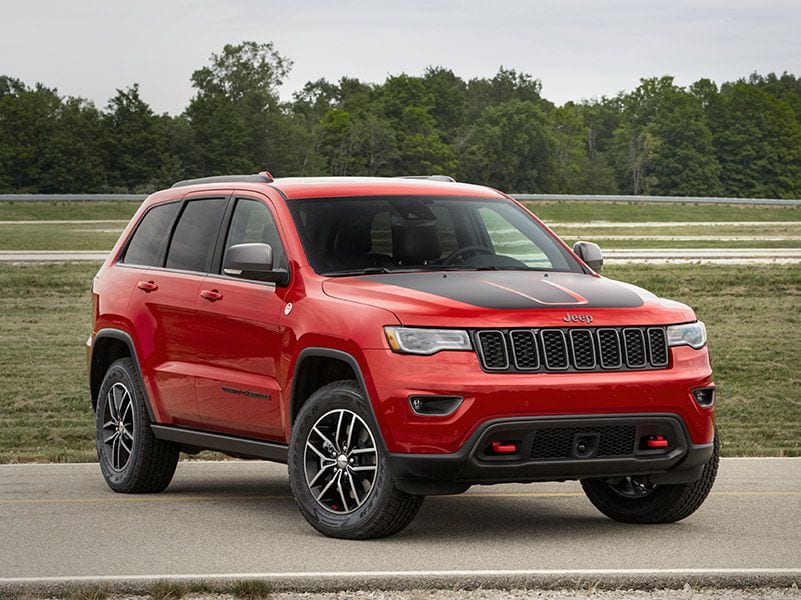
2020 Jeep Grand Cherokee front three quarter ・ Photo by Fiat Chrysler Automobiles
Despite its decade-old age, the 2020 Jeep Grand Cherokee is one of my favorite SUVs. It looks exactly right, it's sized exactly right, and it drives exactly right. It reflects who you are or who you want to be. Successful. Outdoorsy. Tough. Prepared. American.
Ready for anything, from blizzards to boulders and from snow to sand, the Grand Cherokee makes you feel unstoppable, even if you never use it to its full potential. When you drive this Jeep in the urban jungle, you don’t worry much about potholes, or frost heaves, or curbs, or parking blocks. The Grand Cherokee takes the daily grind in stride and is ready for adventuring when Saturday rolls around. Whenever I’m assigned to review the Grand Cherokee, I’m happy to spend a week behind the wheel. I like this SUV a lot. I just wish I could recommend it to you.
2020 Jeep Grand Cherokee Configurations
Jeep makes a 2020 Grand Cherokee for just about anybody. There are 13 different versions from which to choose, from the base Laredo ($33,540, including the $1,495 destination charge) to the high-performance Trackhawk ($88,395).
In between those extremes, there is the popular Limited ($41,545), the off-road-tuned Trailhawk ($46,695), the upscale Overland ($47,790), the luxurious Summit ($53,490), and the performance-oriented SRT ($69,890). Rear-wheel drive is standard with four-wheel drive optional, except on the two most expensive versions of the Grand Cherokee, where 4WD is standard. There are also six other versions of this SUV, mainly amounting to option, appearance, and special edition packages. My test vehicle was one of them: the Grand Cherokee Limited X. Starting at $46,495, it came with 4WD, extra-cost Slate Blue paint, upgraded speakers, a panoramic sunroof, and a ProTech II option package full of driving assistance technology. The grand total came to $52,525.
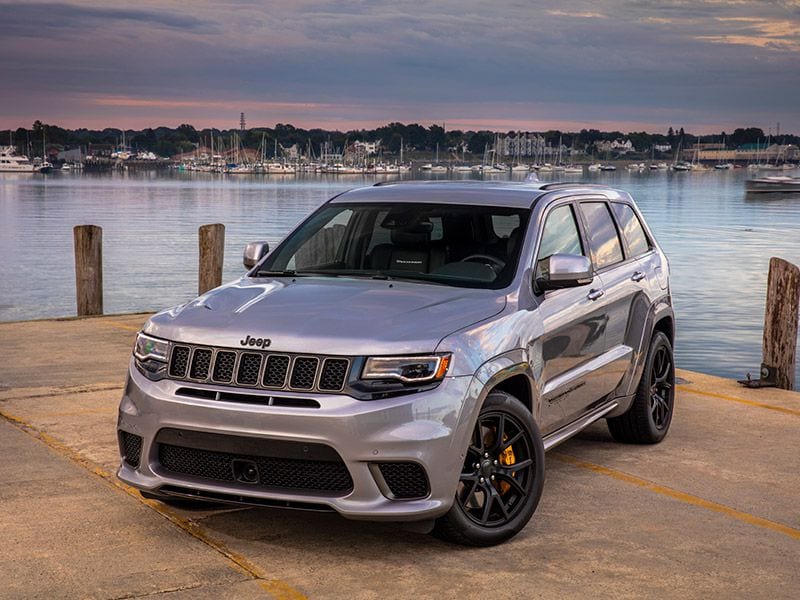
Photo by Fiat Chrysler Automobiles
Timeless Design, Simple Layout
Given that it's been the road for a decade with few changes over its lifespan, you know what a Grand Cherokee looks like. Key features include a seven-slot grille, trapezoidal wheel arches, cleanly sculpted door panels, a gently upswept greenhouse, and a tidy tail with horizontal lighting that bleeds into the tailgate. Do you know why Jeep hasn’t changed it much? Because it looked great in 2010, and it still looks great in 2020.
Inside, the design hasn’t aged as well, reflecting the round forms that were popular when it first came out. Materials range from passable to plush, with higher trims including leather-wrapped interior panels, premium leather for the seats, real wood on the steering wheel, and more. Few people will complain about the Grand Cherokee’s control layout, though. Knobs and buttons are the rule, and the Uconnect infotainment system is among the best in terms of user experience.
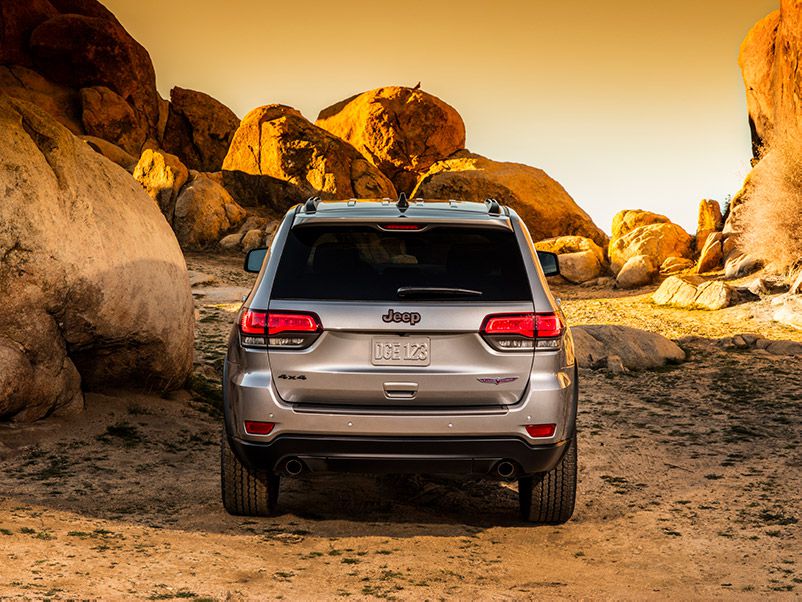
Photo by Fiat Chrysler Automobiles
Roomy for Five Passengers
The Jeep Grand Cherokee is, and always has been, a five-passenger SUV. You get two rows of seats, which allows Jeep to retain the approach, break-over, and departure angles that are necessary for Trail Rated off-roading activity. Up front, the Limited X’s power-adjustable, heated, leather-wrapped seats are comfortable, but at this price, they really should offer ventilation. To activate the seat heaters and the heated steering wheel, you need to use the 8.4-inch touchscreen display; that's less than ideal compared to a dedicated physical button.
Rear seat passengers enjoy decent legroom, but not enough to really stretch out and get comfortable. Seatback storage includes robust plastic hooks for grocery bags, and the test vehicle had air conditioning vents, USB ports, and a household-style 115-volt power outlet. Cargo space measures 36.3 cubic feet behind the back seat, and 68.3 cubic feet with the rear seat folded down. These are not impressive numbers, aligning more with a compact crossover than a mid-size SUV.
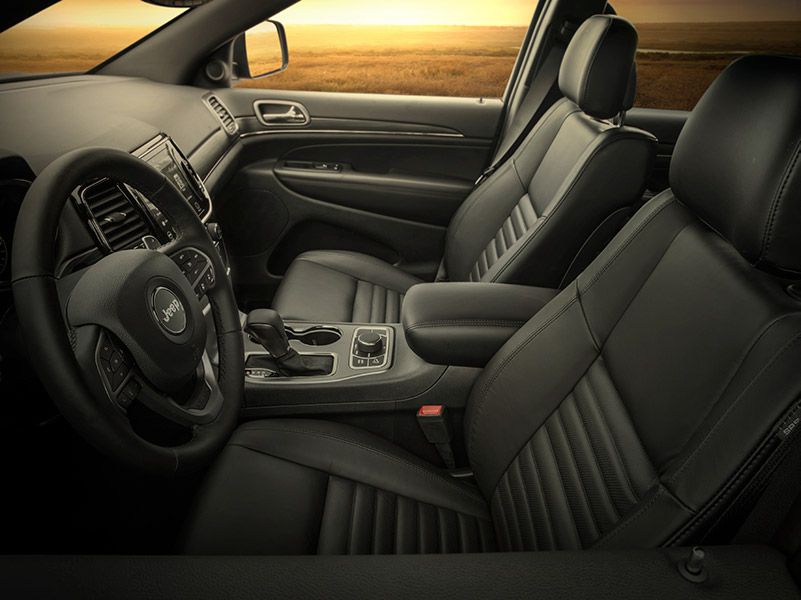
Photo by Fiat Chrysler Automobiles
Technology That’s Kept Up With the Times
For a 10-year-old design, the Grand Cherokee has successfully kept up with the times for infotainment technology. From its 8.4-inch touchscreen infotainment system with Apple CarPlay and Android Auto to its 4G LTE Wi-Fi hotspot and Amazon Alexa integration, it delivers the tech features people want. There’s even an available 19-speaker Harman Kardon sound system for audiophiles who appreciate rich sound.
Jeep’s Uconnect infotainment system is known for its ease of use, and it remains one of the better systems available today. From the location of the display screen and its graphics to the menu shortcuts and touch responsiveness, it works well. And, for the most part, frequently used functions are completely divorced from the touchscreen, thus limiting interaction and distraction. I found the Grand Cherokee’s voice recognition system easy to use, too. It’s not a natural voice recognition system, but the voice prompts are close to what I would typically use, making it easy to find the closest Starbucks and hospital. It did not do well when searching for a restaurant run by locals, though.
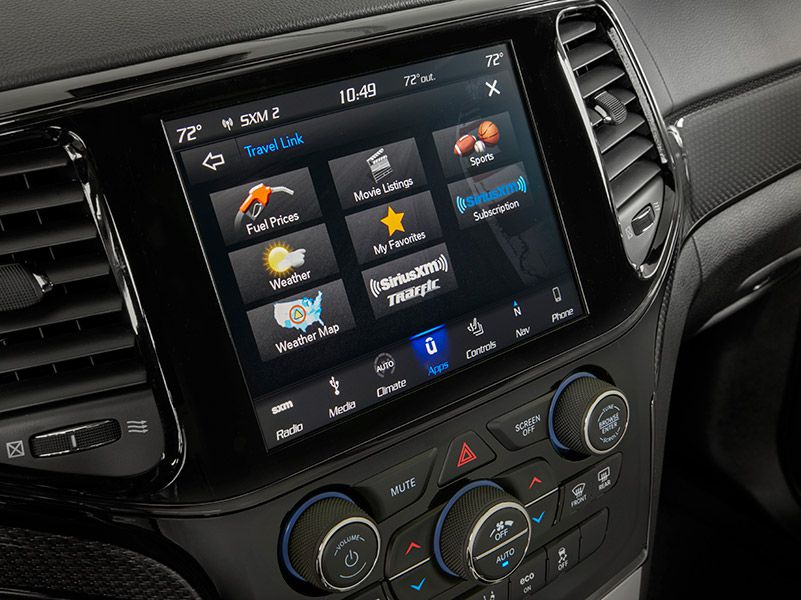
Photo by Fiat Chrysler Automobiles
Poor Showing in Crash Testing
By now, you’re probably wondering why I don’t recommend the Jeep Grand Cherokee. Safety is the problem, and specifically this SUV’s lousy crash-test ratings.
In the Insurance Institute for Highway Safety crash-testing, the Grand Cherokee gets a Marginal rating for frontal-impact, small-overlap protection on the driver’s side. For the front passenger, it gets worse. This Jeep rates Poor for that seating position. This is not a surprising showing for a vehicle engineered in the late 2000s. But it is unacceptable in a vehicle so frequently purchased by families. As far as driving assistance and collision avoidance systems go, the Grand Cherokee comes with a long list of effective technologies. But unless you’re buying one of the four most expensive versions of the SUV, they cost extra. I beg your pardon, Jeep, but if your vehicle has crash-test ratings like the Grand Cherokee’s, the least you can do is make the crash-avoidance technology standard.
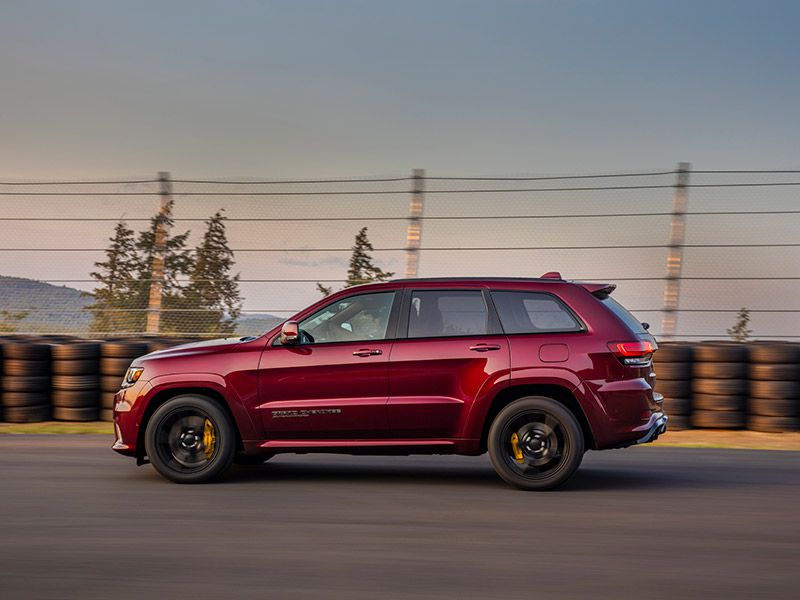
Photo by Fiat Chrysler Automobiles
Standard V6 Engine Supplies Plenty of Power
When buying a 2020 Grand Cherokee, you can choose between a 3.6-liter V6, a 5.7-liter V8, a 6.4-liter V8 (SRT only), and a supercharged 6.2-liter V8 (Trackhawk only).
Most people stick with the standard 3.6-liter V6, and that’s what my test vehicle had. It makes plenty of power for daily driving, producing 293 horsepower and 260 lb-ft of torque delivered to the rear or all four wheels through an eight-speed automatic transmission. My test vehicle had 4WD with multiple driving modes for different types of terrain. Though the Pirelli Scorpion Verde 265/50R20 all-season tires weren’t the best for off-roading, the Grand Cherokee Limited X nevertheless traveled a trail most crossover suvs can’t. In EPA testing, the 4WD V6 Grand Cherokee returned 21 mpg in combined driving. I got 19.4 mpg on my testing loop.
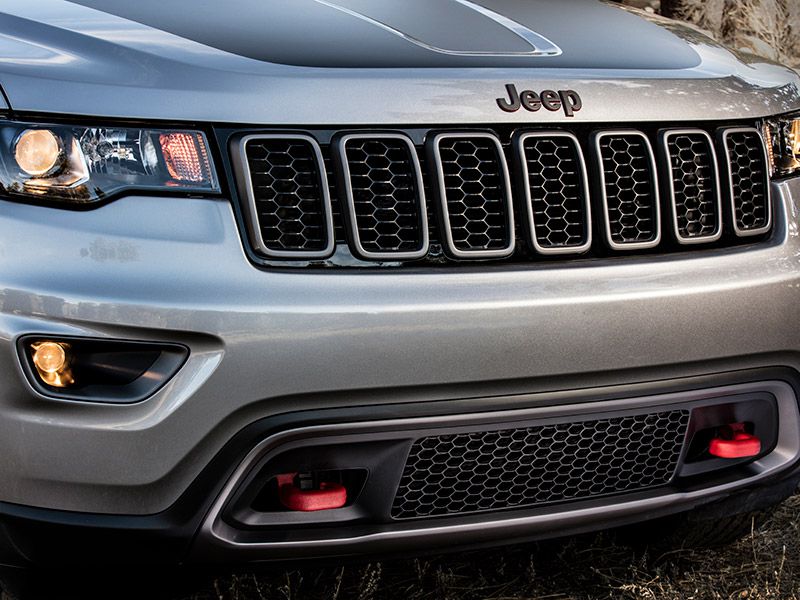
Photo by Fiat Chrysler Automobiles
Nimble and Enjoyable to Drive
Those big tires might not be trail rated, but they supply decent grip on pavement. With the powerful V6 and sticky tires, this Jeep can hustle when used in the urban jungle. And the ultra-tight turning radius makes the Grand Cherokee highly maneuverable in spite of its rather slow steering.
Softer than a Wrangler but stiffer than a Cherokee, the Grand Cherokee does a good job of providing a decent ride while standing ready to deal with speed bumps, drainage dips, and other pavement problems that are common during the daily drive. Take the Grand Cherokee for a run down a favorite country road, and you’ll find that it rolls, wobbles, and tosses your head — unless, of course, you get the SRT or Trackhawk version. Tuned to deliver performance on pavement, they provide better handling than you’d ever expect from a Jeep. But they come at a significant cost.
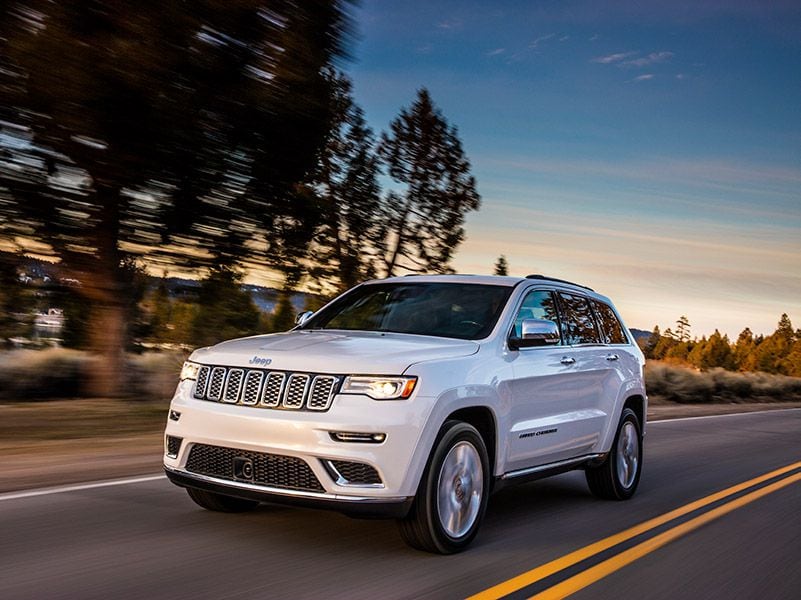
Photo by Fiat Chrysler Automobiles
Most Direct Competitor Is the Toyota 4Runner
Finding a direct competitor to a Jeep Grand Cherokee isn’t easy. Plus, this SUV covers a broad cross-section of vehicles, so the competition ranges from the Toyota 4Runner to the Mercedes-AMG GLE.
Most Grand Cherokees are priced between $35,000 and $50,000, which is the heart of the five-passenger mid-size SUV market. The 4Runner is the most direct competitor, but its IIHS safety ratings aren’t much better than the Jeep’s. You could downgrade a bit to a Subaru Outback, and though it’s basically a car sitting on a lifted suspension, it does provide 8.7 inches of ground clearance — better than a standard Grand Cherokee’s 8.6 inches. If you’re not planning serious off-roading adventures, consider the Honda Passport, which is safer and better to drive on pavement. And if you really need a third-row seat, the Dodge Durango sits on the same platform as the Grand Cherokee, with most of the same benefits and detriments.
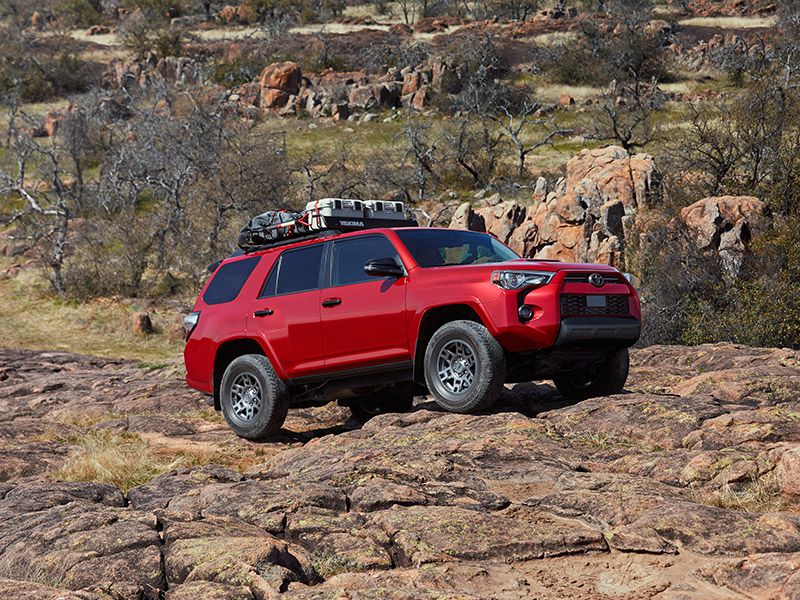
Photo by Toyota
Easy to Recommend…Except for Crash-Test Ratings
Thanks to its rugged good looks, serious adventuring capabilities, capable powertrains, comfortable cabin, practical storage, decent utility, and modern technologies, the 2020 Jeep Grand Cherokee remains popular in spite of its advanced state of automotive age.
Made in Detroit, like I was, the Grand Cherokee personally appeals to me. It feels good to walk up to this SUV, get in, start the engine, and drive, regardless of whether it’s the basic Laredo or a luxed-up Summit. And the SRT and Trackhawk versions are something else entirely, from the sounds they bellow to their physics-defying performance. Unfortunately, until Jeep fixes the crashworthiness problem, the Grand Cherokee is fatally flawed. Rumor has it that an all-new one is coming for 2021 or 2022. Hopefully, Jeep prioritized the resolution of this issue.
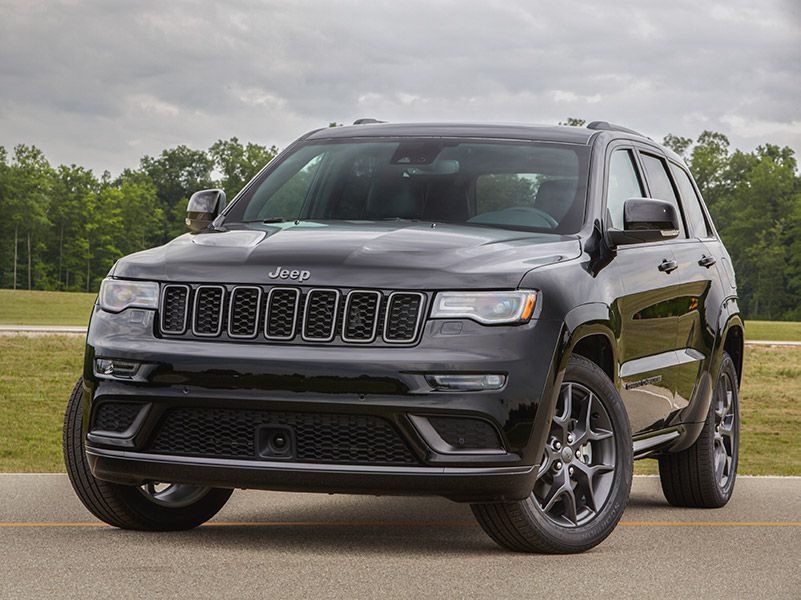
Photo by Fiat Chrysler Automobiles